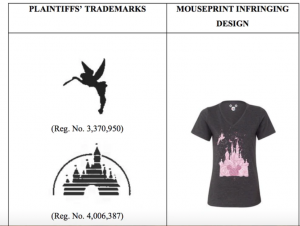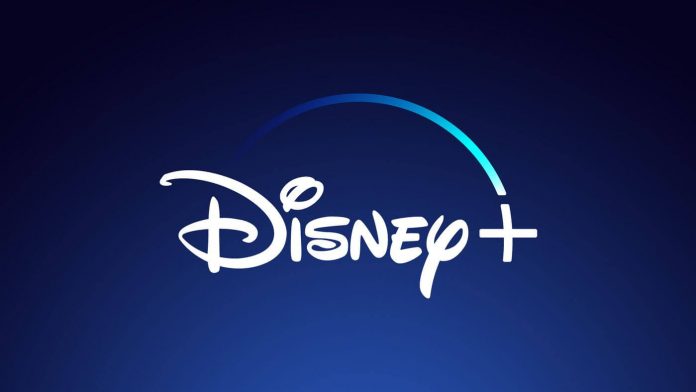This article is written by Shradha Jain, pursuing a Diploma in Intellectual Property, Media, and Entertainment Laws from Lawsikho.com.
Table of Contents
Introduction
Everyone has seen a Disney cartoon at least once in their life, maybe as a kid or maybe when they went to the movies with their kid. It cannot be denied that Walt Disney created artistic masterpieces that embodied timeless values and feelings which drifted us into the nostalgia of pleasant times where happily ever after seemed plausible. It’s a company that has been around for a century now and it has made a lot of money during its existence. They have their business fingers in many pies, from movies, music, cable networks, theme parks, etc., and have established themselves as mainstream media powerhouses of the world.
Disney owns numerous copyrights that restrict the use of its character names and images by others. Copyright gives Disney exclusive rights to use the characters. For example, Mickey Mouse, Winnie the Pooh, Marvels, Elsa, etc. It holds Merchandising Rights to exploit, sell, license its movies and character images. It holds all the distribution and Production Rights over its movies, series, prequels, and sequels, and derivatives in any other form. In this article, we shall see a list of cases that have led to copyright infringement of Disney’s characters, the issues involved in them and the impact it had on Disney’s intellectual property rights.
Disney and its copyright history
Disney grew from a small animation studio to a large, multi-million-dollar company and acquired a great deal of intellectual property in the process. It is one of the largest copyright lobbyists in America and has contributed to the campaigns of 18 of the 25 Congressmen who supported Sonny Bono’s House and Senate laws and, as such, received much criticism for its actions in the process.
Disney Studio was founded in 1928 after Walt Disney quit his job at Universal Studios. He lost the rights to his first hit character, “Oswald the Lucky Rabbit”. He produced short Technicolor cartoons and became a successful producer of programs that coincided with a soundtrack. During this time, “Mickey Mouse” began its rise to power and ultimately ended being the most iconic character of Disney. Over time, the company strived for bigger and better productions and finally produced its first feature film “Snow White and the Seven Dwarfs” in 1937.
Disney’s first animated film, Snow White and the Seven Dwarfs is an adaptation of Grimm for Snow White and the seven dwarfs which is available in the public domain. Many of its classics have used stories from the public domain (whose copyrights have expired), which has allowed Disney to build its business empire on the successful works of the past. To understand this, we have to take a look at the copyright act in the USA.
Under the Copyright Act of the USA, a derivative work is “work based on one or more pre-existing works” and includes “any manner in which a work can be remodelled, transformed, or adapted” (If the pre-existing work is still protected by copyright, the consent of the author or owner is usually required to adapt the underlying work).
This shows that drawings or cartoons (2D works) are protected independently if they meet material requirements. This protection consists in the fact that original work is not necessarily new as it is an adaptation of an existing literary graphic (whether in the public domain or not) and may be protected by copyright, such as the literary characters Pinocchio or Cinderella adapted to the cartoon format of the Walt Disney Company.
The compiler or adapter’s copyright protection extends only to the “new topic,” that is, the original contribution to the underlying material, and does not contribute to the copyright status of that material. Therefore, the new job will not delete the old literary work from the public domain, nor will it prevent other authors from creating new work.
The notion of adaptation is very important to understand copyright protection, and for this, we have to take a look at Article 2(3) of the Berne Convention: “Translations, adaptations, arrangements of music and other alterations of a literary or artistic work shall be protected as original works without prejudice to the copyright in the original work”. Ironically, for the past few decades, Disney has focused on protecting their rights and preventing other artists and filmmakers from having the same opportunities as the company.
Disney and its copyright: Will the characters live “happily ever after”?
Not only does Disney have significant intellectual property rights in its characters, but it also strictly enforces those rights. A simple Google search reveals the number of lawsuits Disney has filed against those who tried to misuse their characters’ names or likeness, without permission, caused confusion and unfair competition, damage to goodwill, and merchandising counterfeit goods.
Here’s a list of the popular infringement cases
-
Disney sued three day-care centres
In 1989, Disney sued three day-care centres (Very Important Babies Day-care, Good Godmother Day-care, and Temple Messianique) for putting up life-size designs and drawings of cartoon characters like Minnie Mouse and Mickey Mouse. Disney claimed that it led to the conclusion that the daycares were sponsored by Disney and also it was an infringement of their copyright and trademarks and wasn’t covered under fair use. The daycare centres had to take them down. This resulted in a trademark infringement suit filed against Disney accusing it of unauthorized use of the Brown Derby name at the Disney-MGM Studios Theme Park. “It surprises me,” said Brown Derby Inc. lawyer David Rosenzweig, “that a company that reveres and recognizes the importance of its trademarks would do this, but I suppose it happens.” This, coupled with public outrage over the daycare’s allegations of copyright infringement, put Disney in an uncomfortable position. This situation was cleverly used as a promotional tactic by Universal Studios Florida and Hanna Barbera Productions, which had their characters like Scooby-Doo, the Flintstones, the Jetsons, and Yogi Bear used and were also present at the opening. This all-projected Disney in a bad light, when Disney had needed all the good publicity it could as it had just given a severe blow to Universal Studios in the theme park business by opening its Disney-MGM Studios park.
-
Disney Enterprises, Inc. vs. Mouseprint Media LLC
In 2020, Disney won the lawsuit against Florida-based retailer Mouseprint Media, also known as “DisGear,” for using its copyrighted images from Disney movies such as Star Wars. Disney alleged the infringement caused great harm, confusion and unfair competition. Disney stated that this led people to believe that Mouseprint was linked to Disney when it wasn’t. The court further stated that this resulted in Disney’s intellectual property rights being watered down and infringed, and the goodwill associated with it being damaged. The court also ordered the website to be transferred to Disney. Hence it was a victory for Disney as it could successfully prevent misutilization of its IP at its benefit and strengthen the goodwill associated with it.

https://rb.gy/biqyis
-
Disney’s Cars vs. Chinese Autobots
The Autobots, released last year, took the design of key characters from the Cars series, including Lightning McQueen in the first film and Francesco Bernoulli in the sequel, violating the copyrights of Disney and Pixar. In 2016, Disney and Pixar Animation won a lawsuit against a Chinese producer BluemTv and distributor G-Point over Disney’s animated movie characters and posters. The Shanghai Court ordered a pay-out of $190,000 for copyright infringement. This victory will help Disney to gain a footing and recognition that it is the true owner of the various IP rights in characters in the mainland where it is facing tough competition in the market from local theme park developers, popular Chinese animations as well as counterfeits from merchandise to fake Disney hotels.
-
Disney Enterprises, Inc. v. TTKN Enterprises, LLC
In this case, the plaintiff Disney argued that the defendant TTKN Enterprises without permission authorized paid access to copyrighted materials, such as “Frozen II” and “The Amazing Spider-Man”. The United States District Court, C.D. California, Western Division ordered a permanent injunction against the defendant from streaming copyrighted works of Disney on the internet or through any other means of dissemination permanently. The court also ordered damages to the tune of $40 million to the plaintiff. This caused damages and resulted in unfair competition to the plaintiffs own video-on-demand services, including Hulu, Netflix and Amazon Prime, which harmed their subscriber base.
-
Disney vs. Redbox case
Disney is suing Redbox, claiming that Disney opposes Redbox’s splitting of “combined packages” containing Blu-ray discs, DVDs and codes, which can be digitally redeemed and marked as “not for sale or transfer.” In Disney’s view, this is tantamount to violating the contractual terms of selling such “bundles” and encouraging copyright infringement. Essentially, the latter claim is that customers who purchase movie download codes from Redbox and then redeem them will be committing an unlawful act. A preliminary ban in favour of Disney was issued to prevent Redbox from doing so. Disney eventually won all claims except for false advertising of the package, including a permanent ban on the sale of Redbox download codes. This helps Disney to gain an advantage over who has started its streaming services as it can fraudulently deal with its artist kick off its competitor i.e., Redbox who after selling physical media in kiosks wants to adapt itself by entering into online streaming services.
-
Disney vs. Emerson Elementary
In 2020, Berkeley’s Emerson Elementary School screened the newest Lion King remake at a PTA event. The licensing organization that represents Disney slapped the school with a notice stating that it was a copyright infringement and had to pay a penalty of $250 for publicly screening copyrighted content material without a license. This news gained headlines when the school started crowdfunding to collect the penalty amount. The CEO of Disney tweeted apologising for the penalty and also contributing to the crowdfunding. This puts Disney in an awkward position as its characters are mainly intended for children and all the works are targeted towards them, so when an elementary school screens the movies for children who can’t afford to watch them at the theatres and they hit them with a notice it is bad publicity for them. They can’t afford this, especially among their target audience. It also makes them appear as moguls feeding off the weaker.
-
Walt Disney Co vs. Powell
In this case, Powell had a souvenir selling business and he was selling the mouse face t-shirts without Disney’s permission infringing on the merchandising rights and copyright related to the characters. Disney filed a case against Powell. The court ordered a permanent injunction against Powell and ordered a fine of $15,000 each for six copyright infringements. The court ordered a permanent injunction against Mickey Mouse and Minnie Mouse and all other Disney characters including but not limited to Donald, Goofy, Roger Rabbit, etc. Defendant Powell was also infringing upon copyrights of Pepsi, Playboy, and Georgetown University. This suit by Disney acted as a deterrence to stop Defendant from infringing any more copyrights as it knew that others would come after him and that he can’t afford to pay the damages, thus creating a precedent for infringers.
-
Mathew vs. Walt Disney
Mathew, the plaintiff sued Disney i.e., the defendant for the Pirates of the Caribbean franchise said that it had been stolen from him. Disney presented old “theme park art” that predated his own and represented that it had independently created “the unique supernatural elements in Pirates of the Caribbean that involves pirates transforming and turning into living skeletons under the moonlight due to a hideous curse affecting them”. Disney won the case proving that it was the original copyright of Pirates of the Caribbean and not the plaintiff. It wasn’t the first time that a plaintiff had filed a suit against Disney. After withdrawing his 2nd lawsuit, Mathew had signed a release agreement waiving his right to bring future actions against Disney based on the copyright claims released as a result of the agreement. Yet, he brought the present suit against the defendant. It shows the poor acceptability of the waiver agreements among the artist and it also points to the direction that Disney deals with its artist in a fraudulent manner creating an impact on its future association with the artist.
-
Disney vs. Denise Daniels
Plaintiff claimed that Pixar’s 2015 film “Inside Out” was based on her idea and Disney had infringed her right. The 9th Circuit Court of Appeals rejected the copyright lawsuit and ruled that the copyrighted work belonged to Disney. The judge based his decision on the ‘Towle Test’ laid out in the 2015 case of D.C. Comics v. Towle. The judge wrote- “it must display consistent, identifiable character traits and attributes; such that it is recognizable wherever it appears… while distinctive, consistently drawn film characters ranging from James Bond to Godzilla to the Batmobile have been held copyrightable, Daniels’ anthropomorphized emotions do not meet that standard.” This decision of the court has created “chaos” and “confusion” over protection for fictional characters. As Denise Daniel has rightly pointed out in her petition “the justices needed to clarify when characters themselves are protected by copyrights because lower courts had adopted inconsistent tests divorced from the foundational principles of copyright law.” Till such inconsistencies exist the mainstream media powerhouses like Disney themselves would not know when their certain creation is protected and when it’s not. This might create hesitancy and confusion and impact the development of dynamic intellectual property rights.
Conclusion
When you consider that Disney has been around for nearly a century and is the mainstream media powerhouses, the list is endless. There is no doubt that protecting your intellectual property is beneficial and prevents people from getting any income from your creation. You must weigh and analyse the impact of such cases on yourself, and decide based on this; whether such protection will benefit you, put you in an uncomfortable situation, or have a negative impact. Take the example of Frozen. The song ‘Let it go’ from the movie has become so famous and you can almost spot every father-daughter duo performing and videos are available on YouTube. This act of copyright infringement has honestly boosted the recognition of this movie, making Disney an excellent deal of money. It’s obvious that Disney desires to keep an eye fixed on people who could violate their copyrights in maximum cases, however it may pay to turn a blind eye at different times if it is in their benefit.
References
- https://sites.udel.edu/cisc356/2015/05/01/disneys-copyright-history/
- https://www.medialaws.eu/disney-and-his-copyright-will-his-characters-live-happily-ever-after/
- https://www.legalteamusa.net/disney-and-intellectual-property-rights/
Students of Lawsikho courses regularly produce writing assignments and work on practical exercises as a part of their coursework and develop themselves in real-life practical skills.
LawSikho has created a telegram group for exchanging legal knowledge, referrals, and various opportunities. You can click on this link and join:
 Serato DJ Crack 2025Serato DJ PRO Crack
Serato DJ Crack 2025Serato DJ PRO Crack











 Allow notifications
Allow notifications



